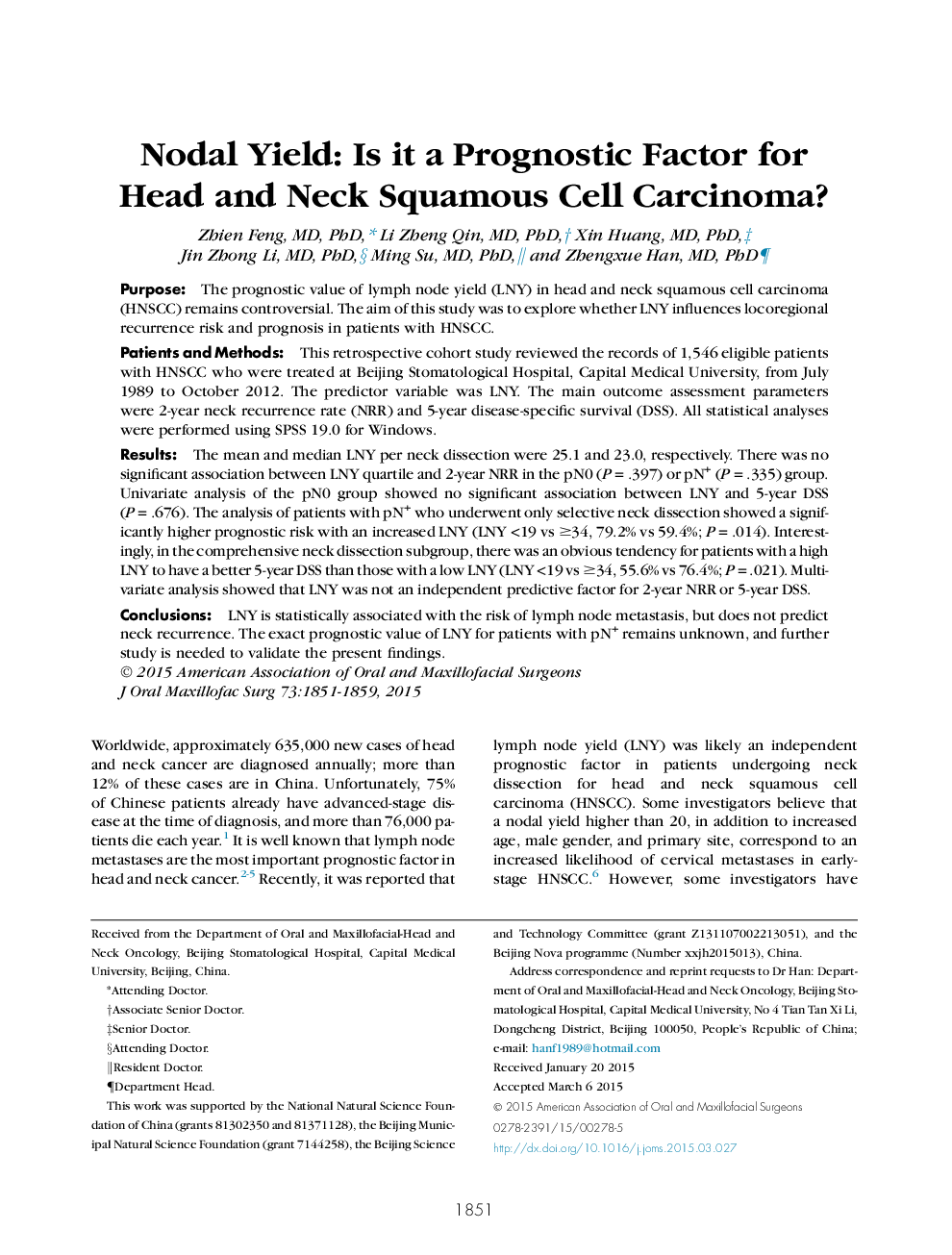| Article ID | Journal | Published Year | Pages | File Type |
|---|---|---|---|---|
| 3152280 | Journal of Oral and Maxillofacial Surgery | 2015 | 9 Pages |
PurposeThe prognostic value of lymph node yield (LNY) in head and neck squamous cell carcinoma (HNSCC) remains controversial. The aim of this study was to explore whether LNY influences locoregional recurrence risk and prognosis in patients with HNSCC.Patients and MethodsThis retrospective cohort study reviewed the records of 1,546 eligible patients with HNSCC who were treated at Beijing Stomatological Hospital, Capital Medical University, from July 1989 to October 2012. The predictor variable was LNY. The main outcome assessment parameters were 2-year neck recurrence rate (NRR) and 5-year disease-specific survival (DSS). All statistical analyses were performed using SPSS 19.0 for Windows.ResultsThe mean and median LNY per neck dissection were 25.1 and 23.0, respectively. There was no significant association between LNY quartile and 2-year NRR in the pN0 (P = .397) or pN+ (P = .335) group. Univariate analysis of the pN0 group showed no significant association between LNY and 5-year DSS (P = .676). The analysis of patients with pN+ who underwent only selective neck dissection showed a significantly higher prognostic risk with an increased LNY (LNY <19 vs ≥34, 79.2% vs 59.4%; P = .014). Interestingly, in the comprehensive neck dissection subgroup, there was an obvious tendency for patients with a high LNY to have a better 5-year DSS than those with a low LNY (LNY <19 vs ≥34, 55.6% vs 76.4%; P = .021). Multivariate analysis showed that LNY was not an independent predictive factor for 2-year NRR or 5-year DSS.ConclusionsLNY is statistically associated with the risk of lymph node metastasis, but does not predict neck recurrence. The exact prognostic value of LNY for patients with pN+ remains unknown, and further study is needed to validate the present findings.
